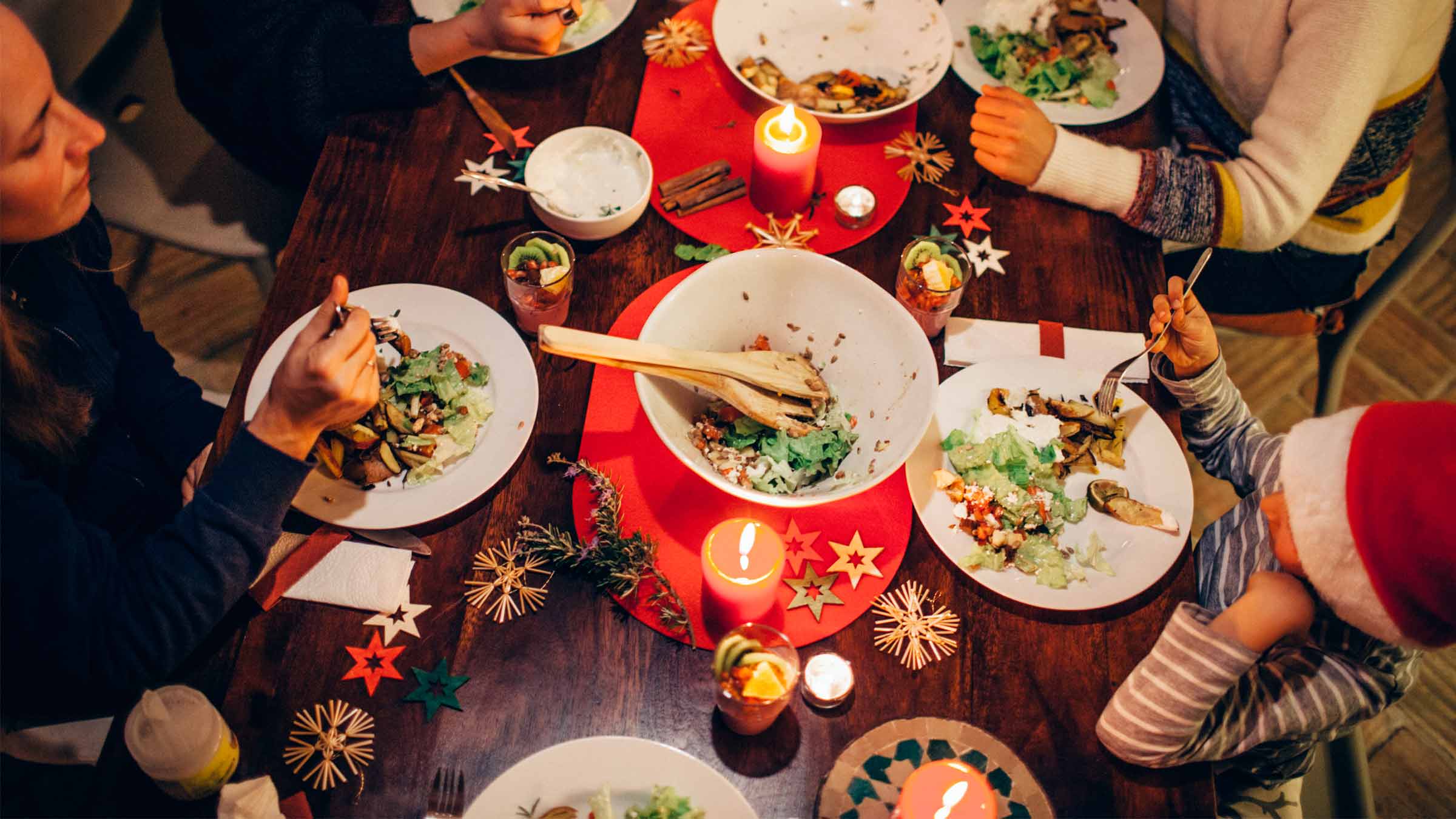
It’s that stuffing time of year. Cramming plates with holiday food, heavy on the starch, light on the veggies. Glasses filling and refilling.
How you eat and drink on one or two days of the year likely won’t derail your plans for maintaining a healthy weight — as long as you don’t dive into weeks of overindulgence.
At the same time, there’s no need to deny yourself what you await all year: pecan pie, a couple of frosted cut out cookies, green bean casserole. Go ahead and have one or two of your favorites, but resist making it a daily habit. Multiple meals with multiple days of excess can be taxing on your health and your waistline.
If you’ve been trying to lose weight during the holidays, consider scaling back on those ambitions. Possibly shift your goal to just not gaining any weight this time of year. When the tinsel and lights are back in storage, you can go back to making plans for trimming down.
As you’re cooking and eating, consider some healthy holiday swaps:
1Replace bread crumbs with rolled oats
2Replace butter, margarine or shortening in baked goods with applesauce or prune puree for half of the butter, shortening or oil
3Replace sour cream, full fat, with reduced-fat sour cream or fat-free, plain Greek yogurt
4Replace sugar with half the sugar in the recipe and add cinnamon, vanilla or nutmeg for sweetness
5Replace butter to sauté with a healthy oil instead — olive, canola or avocado oil are good choices
6Replace mashed potatoes with half the amount of potatoes mixed with cooked cauliflower
7Replace mayo on sandwiches and wraps with avocado
Try converting your traditional starch-filled holiday plate into a plate that’s filled with at least half veggies — all different colors of veggies, ideally. Think lettuces, carrots, tomatoes, peppers, green beans. Then devote a quarter of your plate, at most, to meat, with another quarter to carbohydrates (potatoes, pasta, rice).
First fill up on low-calorie foods, such as vegetables, salads and broth-based soups, before moving on to the foods with a higher-calorie count, such as stuffing, casseroles and desserts.
What’s in your glass matters as well. It can be easy to sip up the calories, because alcohol — even if it’s clear — isn’t calorie-free. Hard liquor mixed with juice or soda is 150 to 200 calories. Wine is a bit lower in calories — 5 ounces of wine is 125 calories. If you make a wine spritzer with half or one-quarter of a glass of wine and the rest sparkling water, that will significantly cut the calories.

Healthy eating is within your reach!
Make an appointment with our dietitians or nutritionists.
Schedule an appointment




